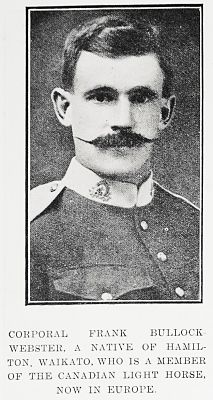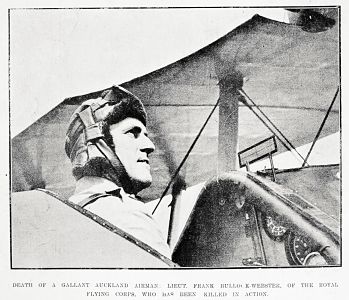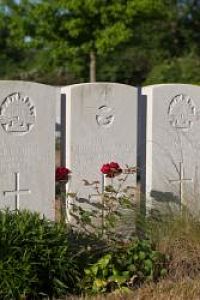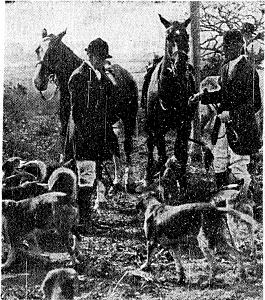WW1 Flight-Lieutenant Frank Hamilton Bullock-Webster
Frank Hamilton Bullock-Webster was born 24 September 1885 at The Lake House, Hamilton, the eldest son of Harold and Maud Bullock-Webster. As a young man Harry (1856-1942) went from Worcestershire to the Canadian North-west, where he joined the Hudson Bay Company to hunt and deal in fur-trading. [1]
Harry worked as a clerk for the company for eight years, until he found a better job in New Zealand with lawyer, politician and “Queen St farmer” Thomas Russell, whom he met back in England. A prolific artist, Bullock-Webster’s collection of drawings showing hunting and trapping activities are part of the Hudson’s Bay archives. He performed a similar service for his New Zealand employer, and his collection of diaries in the Waikato Art Museum contains illustrations of people and animals from colonial New Zealand. [2]
Harry arrived in New Zealand in 1881 and settled in Hamilton, Waikato where he worked for the Waikato Land Association and set up the Waikato Hunt. In 1887 the family had moved to Auckland and Harry became the Master of the Pakuranga Hunt from 1913 to 1939. [3] Harry and Maud lived in Great South Road, Remuera / Ellerslie.
Frank attended Kings College in 1898 and St John’s College in 1899. He was said to have led a very adventurous life. He left New Zealand to enter the service of the Hudson Bay Company, of Canada. He travelled extensively through Canada and Alaska, and was known as a courageous game hunter. Immediately prior to the commencement of war he was ranching in Alberta.
Lieutenant Bullock-Webster joined the Canadian Forces in the 9th Canadian Mounted Rifles, then the Canadian Expeditionary Force in the Canadian Light Horse on 10 October 1915. He embarked wit the Canadian Forces for the UK as an officer in the Machine Gun Corps, and became an expert in machine gunnery. He fought in France with the Canadian Force up to the battle of the Somme, and was then transferred to the Royal Flying Corps as instructor in aerial gunnery. He was engaged in that capacity for three months in England, subsequently leaving for France in March 1916, where he fell ill with trench fever and was invalided to England. [4]
After recovering, Bullock-Webster transferred to the Royal Flying Corps as an instructor in aerial gunnery. He got his pilot’s badge on 10 June 1917 with 11 Training Squadron. He embarked for France with the 23 Squadron on 25 July 1917. On 5 August 1917 in a SPAD S.V11, the plane crashed on takeoff with engine failure but he was uninjured.[5]
By September 1917 Lieutenant Bullock-Webster was with the 23 Squadron (22nd Army Wing, 5th Brigade) based near Poperinge in Belgium. He took off on an offensive patrol on the 20th September 1917 at 12.45 from La Lovie aerodrome in a SPAD 7 B3493 biplane, which was hit [6] and he was badly injured. He was forced to land in a shell hole, with the plane completely wrecked. Although rushed to hospital, he died later in the day and is buried at Ypres. [7]
He is buried at Menin Road South military cemetery, Belgium. His name can be found on a war memorial in Lloydminster, Canada. Frank Bullock-Webster is also commemorated on the St Aidan’s Church memorial cross in Remuera and on the King’s College Roll of Honour.
Frank had two brothers who served overseas. Ranulph Bullock-Webster (1887-1965) was a farmer who left New Zealand in the Mounted Police as a rifleman and served in France. [8]
Captain Aubrey Bullock-Webster (1892-1962), was wounded on Gallipoli in 1915, and after recovering went to England and obtained a commission in the Royal Horse Artillery. He was subsequently transferred to the Indian Cavalry. Aubrey moved to California, via Canada, where he married an heiress, Phyllis Campion, 1930 in Denver Colorado. He had one son and one daughter, played a lot of golf, and died in San Marino, California in 1962. [9]



